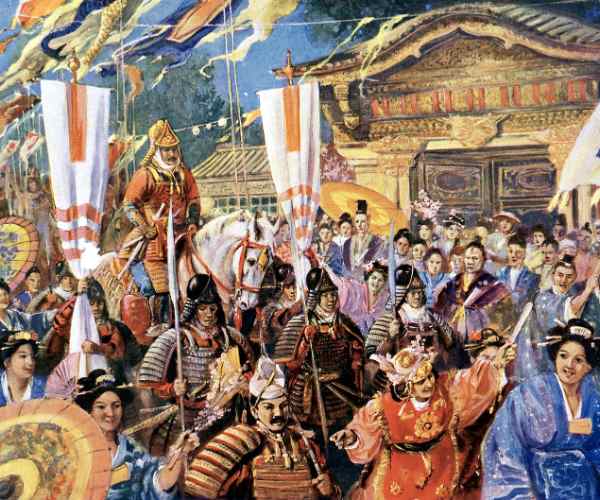The worth and quality of your artwork are likely to batter if they are not properly stored and shipped. We all know how art might mean the world to an artist on an emotional and financial level. A single mistake in the way an artwork is handled can ruin it permanently. For example, if an artwork is left in a humid environment, there are chances of mildew growing on it. Such conditions combined with extreme temperatures can lead to canvas warping and crack the paint. The American Institute for Conservation highlights the importance of proper storage and shipping techniques noting environmental factors as one of the main areas of concern.
Overview of What You’ll Learn
Want your artwork to remain fresh even in the most extreme conditions? If yes, then this guide is for you, it contains practical advice, useful tips, and best practices for storing and shipping multiple types of art. It emphasizes the need and importance of climate control, packing materials, and storage units. Following these strategies can help your art collection avoid any damage and continue to evoke emotions from those viewing it.
Artwork is something that must be preserved with extreme care. A lot of people when it comes to keeping their artwork safe, are still unaware of the methods that can help them with it. One prime example of that, is storage. Storage for artwork differs based on the mediums. With that being said, let’s dive deep into it.
Mediums like canvas, papers, or even limited editions need storage, there are ways to keep them safe, but as mentioned earlier they do require different mediums. Each medium has its drawbacks, rough spots if you will. They include:
– Canvas paintings: Moistrue damage and dust are the two things that ruin these the most, to save these from the elements, specific environments need to be used.
– Paper artworks: These need to be away from the sun as even a slight exposure can ruin them, so using acid free storage materials is a must.
– Limited Editions: Just like its name suggests, these are rare, to maintain their useage, protective plastic sleeves or archival quality boxes can be used.
To preserve artworks, it is suggested by the national archives to use tailored containers which store each artwork in a different and appropriate way.
Humidity And Its Importance
When it comes to preserving art, controlling the temperature and humidity both play an important role. For instance, when humidity has steep fluctuations, or there is extreme heat, artworks can easily get damaged.
Excess moisture can be an issue for fungi and mildew growth so, in order to avoid canvas and paper from being affected humidity should ideally be kept between 30 to 50 percent.
Temperature: Excessive temperature variations have the potential to lead to paint cracking as well as canvas shrinkage. The risk can be minimized through preserving a steady temperature with F between 65 and 70 and C between 18 and 21.
According to The Getty Conservation Institute, maintaining a stable environment is one the most important ways that can help in preserving valuable pieces of art as well as preventing degradation over time.
Choosing the Right Storage Space
Guidelines to use when seeking a storage space to protect your items from airborne debris, pests, and other unsafe situations.
- Security: Look for a controlled temperature storage place that has CCTV, this will guard against stealing and/or damage to items stored.
- Protection from Pests: Make sure that more than just the room used for storage is inspected for infestations and if necessary pest control measures are implemented but also check to see that the area has not been contaminated by insects or rodents.
- Airborne Debris: Use an environment that is free from dust when putting your work of art around so that you do not end up contaminating it.
As articulated by The Museum of Modern Art, safeguarding the security of an item from external factors is important just as maintaining its condition in a fully fledged and enclosed storage facility.
Using Proper Packaging Materials
What is to be used in the process of putting valuables in storage, archival quality items, cardi b weapon experience, and cello tape what to be recommended.
Butterfly wrap serves the purpose of absorbing and sheltering artworks from damage relating to force. Wrap must be non acid so as to not react with the artwork when wrapping it.
Materials For Packing Art For Shipping
Todays topic is about materials for packing art for shipping, it involves the usage for Cardboard Boxes, Tape, Foam, Bubble wrap and much more.
History and Suggestion
As per Art and History Center, Archival material is important and always should be used when working with artworks or preserving them. For an example, Archival tape is also an incredibly solid gripping tension, on the other hand one wouldn’t want to take packing tape due to its construction consisting of an strong, tacky coat.
Materials Needed
– Double walled cardboard
– Bubble wrap
– Foam
– Custom crates
As recommended by Art and History center, to ensure the preservation and protection of the art work, one must always use Archival quality materials, here is more information on other materials that can also be used:
– Double Walled Cardboard is best for fragile and fragile things due to its two layers that are protecting the cardboard, its also suggested that a double wall box is used instead of a single layer box.
– A custom built wooden crate is recommended for larger or extremely expensive things.
– Bubble wrap is also an option but its best to use without heavily compressed items.
P.S Remember to follow guidelines when doing bubblewrap and use layers.
According to shipping recommendations, The American Institute for Conservation believes that high-quality materials can protect items against vibration, pressure, and extreme temperatures during shipment.
A Comprehensive Guide on How to Ship your Artwork & its Confidential Packing Instructions
Reinforcing fragile items with layers of paper, and protecting the edges of the items is an art that is brilliantly showcased in this vivid infographic. In addition to this, the collaboration invites everyone to take a look at the informative bundles that they offer on the packing process of artworks.
To minimize the risk of environmental contamination, it is recommended to use clean areas that are free of dust. This should be done before packing and after securing the item with a tape.
To keep the artwork’s surface pristine while still securing it from other materials, acid-free paper should be first used before bubble wrap. Covering the entire surface with several layers of bubble wrap adds extra protection to the artwork.
Using archival-quality tape is ideal for wrapping things as it does not leave any sort of residue which is commonplace when using packing tape. However, archival-quality tape should only be used to keep the bubble wrap secured in place.
Opting for a cardboard box that is spacious around the artwork is not wise. Rather, artwork should be kept in a snug fitting box. Furthermore, a cushioned base should be set using a layer of foam or packing peanuts.
Securely wrapping the artwork and then placing it in the center of a box does not guarantee its safety. There needs to be adequate padding surrounding the wrapped artwork to ensure its security. Furthermore, to prevent unnecessary movement, the remaining gaps should be filled with additional foam or packing peanuts.
Seal and label: Secure the box using tape and add a “fragile” and “handle with care” label.
According to the Art and Historic Artifacts Conservation Centre, it is recommended to use layered materials as a barrier to minimize the risk of damage during transport.
Labeling and documentation
Labeling and documentation is an important part of the process as well. Sales receipts, multiple pictures, and appropriate documentation make sure your belongings are safely kept and easily located.
- Sales Receipts: Place a copy of sales receipts inside the package to establish proof of value and purchase.
- Multiple Photos: Before artwork is packed, it should be photographed in high resolution, from more than one angle. These could be useful in case of a damage claim and will also establish it was in good condition prior to shipment.
- Detailed Documentation: This type of document should include a packing slip, which contains information about the artwork such as its artist, title, height and width, and the medium it consists of. This type of information helps to trace it and makes sure it is properly treated.
As noted by the National Archives, all pieces of insurance have to be thoroughly documented so that they can be easily located.
Shipping Your Artwork Safely
Choosing a Reliable Shipping Service
Professional shipping services factors to consider the apportionment of the service.Coverage options for high value pieces and ideal insurance professionals to consult.
- Reputation and Experience: When looking for artwork shipping services, select those that have trusted specialists. These are companies that specialize in the transportation of artwork and its secure handling.
- Insurance Coverage: Confirm if the shipping service is able to insure pieces that are worth a lot of money. Reach out to qualified insurance agents for active loss or damage coverage options.
- Tracking Capabilities: Use a shipping service that guarantees to provide proof of delivery and tracking of packages. It will enable you to know where the shipment is and when it will arrive.
The International Society of Transport Aircraft Trading recommends the use of freight Forwarders that offer shipping services directed at transporting sensitive high value items.
Insurance and tracking
Never leave your art assets unprotected, insure and track them. Investigate the provision of separate insurance policies and the reach of a working insurance company in protecting your risk.
- Insurance Coverage: Ask for special comprehensive cover policy for your artwork. The licensed insurance companies have specific policy covers say, for art, which aims at reimbursing for the damaged areas of your artwork or loss during transportation.
- Tracking: Always use shipping organizations that have active tracking. This helps in confirming and tracking the shipment when it arrives. Shipment tracking is available via mobile applications and web portals of a majority of logistics firms.
Art Insurance Policy recommends that all the forms of coverage are selected with the assistance of insurance experts to ensure the security of all the high value items.
Dealing with Special Needs
Caring for oversized or fragile pieces such as NFT and other non-exhibition pieces comes into play.
- Oversized Pieces: These works of art might need the creation of a custom-built crate and employing a professional company to transport them.
- Delicate Items: Easily avoid vibration impact damage and other forms of damage done to delicate art pieces by cushioning the artwork with various shock-absorbent materials and specially designed packaging.
- NFT Artwork: Do not forget to guarantee for non-linear paintings secure digital storage, blockchain technology to confirm the authenticity of the art and to protect fraud and hacking; hardware wallets increase the level of security of digital assets.
- Non-Exhibition Situations: Artworks that are not on exhibition can be stored in a climatically regulated environment with specialized packing material to enhance better conditions.
The Museum of Modern Art stresses the need for customized packaging and shipping for each work of art in relation to that individual work’s particular characteristics.
The rest of the content will be part of the larger pillar blog post on “How to Properly Store and Ship Your Artwork.”
What is the best way to store my artwork at home?
Provide some home storage solutions to prevent them from getting damaged while not on display.
While your artwork is stored at home, make sure you follow the best practices, so that your artwork is still in perfect condition when you access it.
Temperature Regulation: It is best to put your artwork in an environment that is temperature controlled so that the humidity and temperature remains constant. Generally, the best temperature is between 65 to 70 Fahrenheit alongside a relative humidity of between 50 to 55%. Make sure to use air conditioning and dehumidifiers to retain the desired temperature.
Storage Equipment: Use storage aids that are acid-free such as archival paper when wrapping your artwork, and use storage boxes of museum quality when storing the artwork. Consider using custom crates or storage units for canvas paintings, as that will ensure the artwork is protected against dirt and debris.
Avoid Overexposure To Light: Ensure you don’t expose your artwork and other objects to light more than required, as it could lead to them dulling. A good idea is to keep your art in an area that has little light, and still use UV glass if you want to display your art.
According to the Art Conservation Research Foundation, keeping your art in an air controlled setting considerably increases its longevity.
How do I ensure that my art doesnt get damaged during shipment?
Make a note of the packing and insurance that have been recommended to prevent whatever issues you encounter when shipping.
To prevent harm to your items while shipping, adhere to the following:
- Safe Box: Protect your art with bubble wrap, foam and custom boxes. Ensure the item is rigid and cannot move around the box. Use strong tape to prevent accidents when the box is closed.
- Insurance: Cover the artwork for the full amount it is worth. This would cover protection from being destroyed or lost while on transit. Seek assistance from your insurance provider about coverage to avoid insufficient protection.
- Labeling: Write “Fragile” and “Handle with Care” on the packaging for handlers. Explain thoroughly and take multiple pictures of your art for documentation in its original state, and handle documents with care to ensure the maximum possible level of understanding.
Fine arts Transport Company research shows great packing and flexible insurance can avoid 90 of damage in shipping.
Should I insure my artwork in shipping?
Advantages of Artwork insurance coverage and how to deal with insurance businesses.
The advantages of shipping your artwork in transit insurance are many:
- Loss Coverage: Covers the amount lost if the item is stolen on during the transit or it was damaged. This adds value especially on high worth pieces of art or unique art.
- Selecting Coverage: Have Interaction With Certified Insurance Providers To Help Get Them The Best Policy You Can Get. Check Your Policy Against All Possible Areas Of Risk Associated With The Value Of Your Artwork. Engage With Their Insurance Professionals To Get Broad Policy Coverage That Meets Your Requirements.
The National Association of Art Insurance Professionals recommends looking at the insurance offers in detail in order to protect one’s investment properly.
What are the potential risks put forth by poor storage techniques?
Planning out potential issues such as them mold, pests, and moisture, and how they can be addressed through appropriate storage techniques.
Storing art the wrong way can lead to many complications:
- Mildew And Moisture: Storing your humidity up can always result in moisture damaged and mildew. To ensure that the chances of these happening are slim, use dehumidifiers and suffocate the place.
- Pests: Infestations by insects or even other organisms may destroy a piece of artwork. Use a sealed container low pesticide and plague control measures while storing artwork to avoid this.
- Fluctuations in Temperature: Swinging temperatures rapidly very often lead to warping and cracks. Staying away from areas that are likely to have extreme temperatures is key element in maintaining a stable environment.
Art preservation methods most Africans failed. United Nations International Strategy for Disaster Reconstruction regrets that with help of normal climate control and sensible storage people can avoid most of the common problems associated with these art pieces.
Conclusion
In order to keep your art in great condition and able to retain its value:
– Store your work securely, as well as use climate controlled areas and acid free materials to avoid any form of degradation of your work.
– It is advised to use high quality packing materials and to get insurance in case of shipping and delivery and always remember to use clear shipping labels.
– Always remember to factor in the temperature changes, moisture, and even pests, as these can impact the physical condition of your work.
You must place a premium on getting good insurance for your entire art collection, in addition to good packaging. By doing this, you will ensure that your work not only survives the test of time but also continues to reach its full capabilities.
More post




